Recent Articles
Popular Makes
Body Types
2021 Mazda CX-5 vs. 2021 Honda CR-V
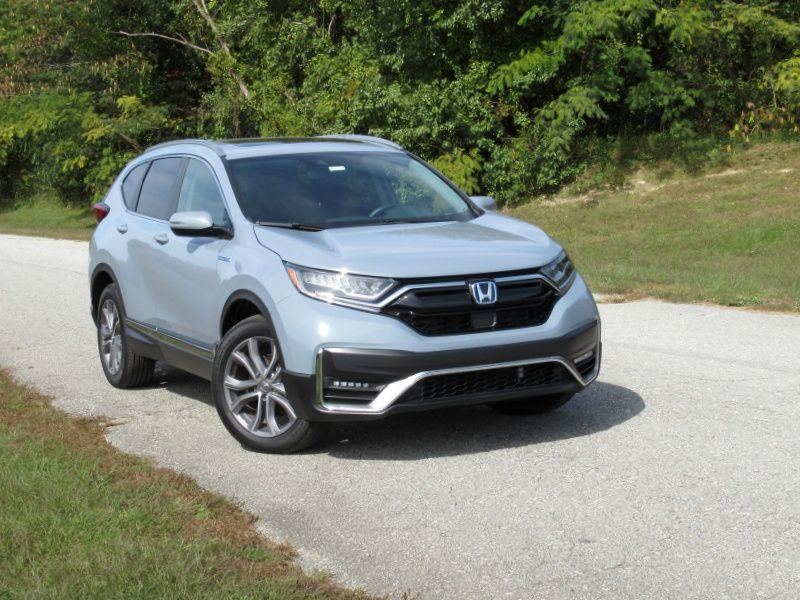
2020 Honda CR-V Hybrid ・ Photo by Brady Holt
The Honda CR-V is known as an SUV that does it all. This popular compact crossover is roomy, pleasant to drive, economical, relatively affordable, and packed with advanced safety features. Its rear seat and cargo hold are bigger than many larger SUVs’, yet it still has the low price and easy maneuverability of a small one.
But perhaps carrying the biggest possible load of cargo isn’t your top consideration. That’s when it becomes time to consider the Mazda CX-5. It offers sportier performance and higher-end interior finishings than the CR-V, all at similar prices. If that sounds potentially appealing, stay with us as we compare the CR-V and CX-5 in eight categories. Then, based on our experience testing both of these small SUVs, we’ll share how you can choose which one is best for you — and which one is our own overall winner.
Pricing and Features
The 2021 Honda CR-V and 2021 Mazda CX-5 have base prices that are just $20 apart: $25,350 versus $25,370. So rather than just looking at who has the lower number (Honda), we’re going to focus on who has more features for the money. And the answer is Mazda. The base CX-5’s long list of features includes blind-spot monitoring, push-button start, rain-sensing windshield wipers, and a sophisticated infotainment system — none of which is included on the base CR-V.
The discrepancy mostly continues across the trim levels. The CR-V does bring a moonroof and power driver’s seat at a lower price than the CX-5, rather than bundling them together with other costly options, but the Mazda is more affordable to upgrade from cloth upholstery to either leather or leatherette, a power liftgate, and a name-brand audio system. The CX-5 also expands its range with luxury-level models that top any CR-V for pricing or features, bringing exclusives like a bigger engine option, cooled front seats, heated rear seats, and Nappa leather upholstery. What’s more, even these features only push a fully loaded CX-5 a couple thousand dollars past the priciest, lesser-equipped CR-V.
Mazda CX-5
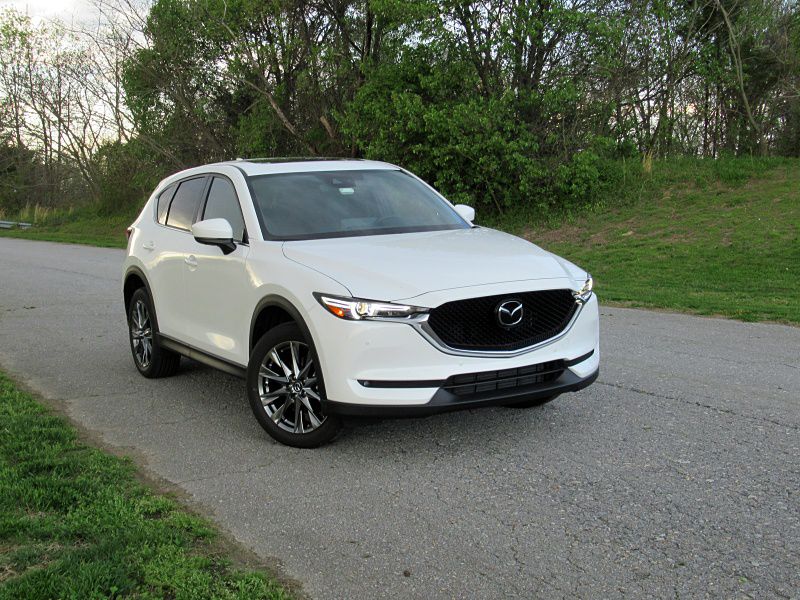
Photo by Brady Holt
Exterior Design
The CX-5 was designed to be stylish and sporty. It hunches forward aggressively, with a sloping rear windshield and a small rear overhang. It has slim headlights and taillights and a bold grille. Yet it’s also a clean design, not overly decorated with fussy details — a timeless look that’s neither in-your-face contemporary nor at risk of aging poorly. As evidence of the latter, that impression has remained the general consensus for the current CX-5’s entire five-year lifespan, a time in which it has seen only the tiniest exterior tweaks.
While you get the impression that the CX-5 looks just the way its designers wanted, the CR-V looks like the styling team was given a box and asked to decorate it. And it’s not the type of box that makes a strong “I’m a box” statement, but just an ordinary small crossover shape with a dead-vertical rear end. It’s dressed up with chrome trim, tall and slim LED taillights, and — in the last couple of years — a more assertively squared-off front end. Overall, we think that unless you prefer a functional vibe, the CX-5 will probably be your styling pick.
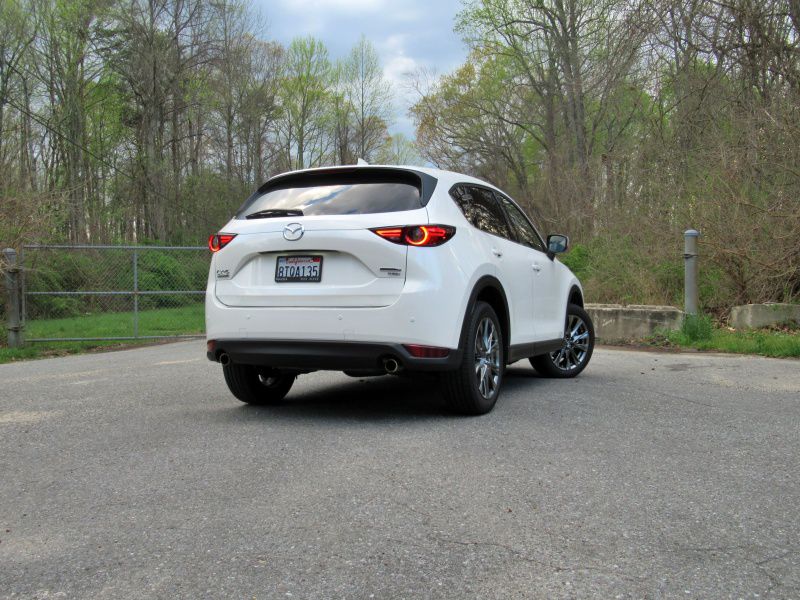
Photo by Brady Holt
Interior Design
Inside, the CR-V features an interior that was impressively upscale back in 2017 — a time when most small crossovers had purely functional dashboards. At that time, the CR-V’s false wood trim and crisp lines were eye-popping. But to our eyes, the effect hasn’t aged well, and some of the CR-V’s dashboard plastics feel low-grade. Another issue is that its available 7-inch infotainment touchscreen has a cluttered interface and sluggish responses. The base CR-V doesn’t have a touchscreen at all; it’s easy to use, but we miss the Android Auto and Apple CarPlay smartphone integration.
Although the CX-5 is just as old as the CR-V, Mazda took a different approach to luxury, and we think it has aged better. Mazda went for a more minimalist vibe and higher-quality materials, and it still looks suitably upscale. It’s not a very SUV-like atmosphere, but neither is the CR-V’s. Mazda’s infotainment system also got an upgrade this year, with all versions now including a generously sized 10.25-inch display screen instead of last year’s 7-inch unit. It’s not a touchscreen — which makes it more complicated to use — but we still prefer the CX-5’s better-finished, higher-tech interior overall.
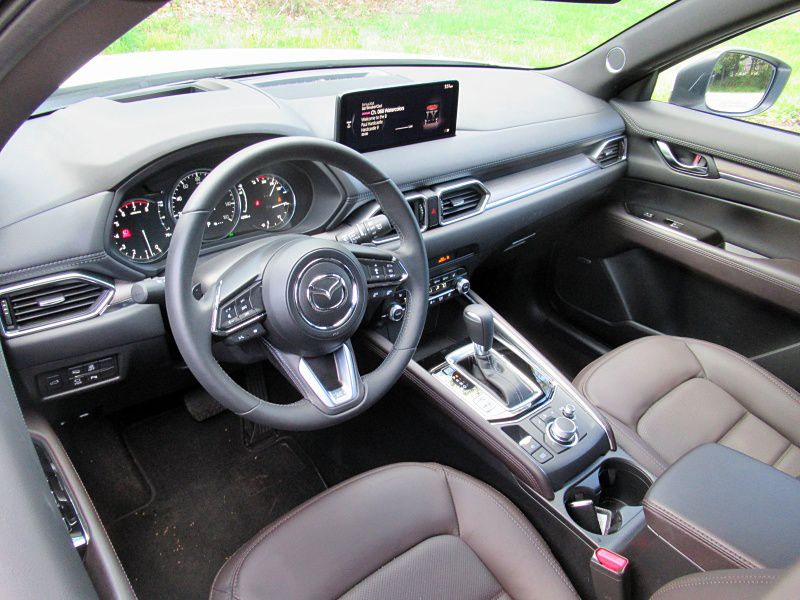
Photo by Brady Holt
Interior Comfort
Do you like an airy cabin or a cozy one? That’s how you’d choose between the CR-V and the CX-5’s front-seat accommodations. There’s similar front-seat space between the two crossovers, but the Honda’s flatter seats and lower center console make it feel more open. In contrast, the Mazda feels more like it’s hugging the driver snugly in place.
The backseat doesn’t come down to mere preference, though. The CR-V has generous legroom, and the CX-5’s is tight unless the front seats are well forward. So while you might prefer the Mazda’s front seats and not need a big rear seat, we’ll award the win to Honda.
Honda CR-V
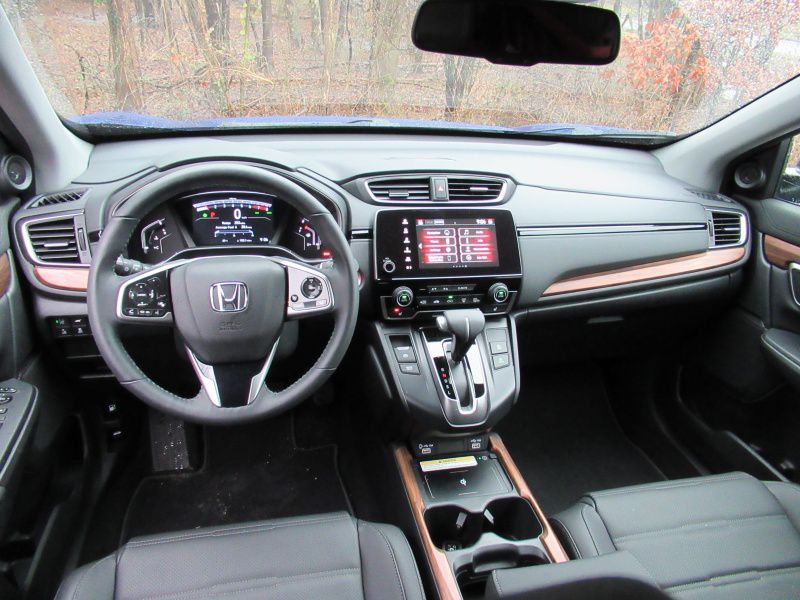
Photo by Brady Holt
Cargo and Utility
The CR-V is designed to maximize cargo-carrying, with its high roof, low floor, and boxy rear end. And this design was incredibly successful, resulting in more capacity than any competing compact crossover and even some mid-size models. This Honda can fit up to 39.2 cubic feet of cargo behind its rear seat and up to 75.8 cubic feet with the rear seat folded. The seat folds easily, and a low cargo floor makes it easy to load and unload heavy items.
The CX-5 fits 30.9 cubic feet behind the rear seat and 59.6 cubic feet with the rear seat folded. That’s not tiny, but it’s among the smallest cargo holds in its segment. The CX-5 is rated to tow a decent 2,000 pounds, trumping the CR-V’s 1,500 lbs, but this category is otherwise a clear win for Honda.
Honda CR-V
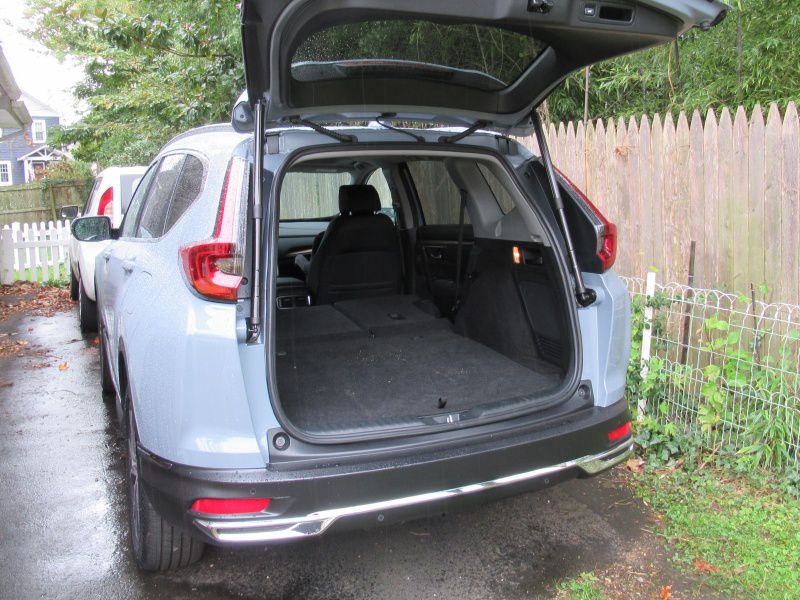
Photo by Brady Holt
Driving Experience
The CR-V is a decent SUV to drive. It has a decently quick turbocharged four-cylinder engine with 190 horsepower and 179 lb-ft of torque, a smooth ride, and fairly responsive handling. Still, the CX-5 is the easy winner of this category.
The CX-5 has the sportiest steering and handling of any mainstream-brand compact SUV, offering an experience comparable to some luxury-brand models. It’s not as sharp as a great-driving sedan, but it’s certainly livelier than the CR-V. What’s more, you can upgrade past the CX-5’s merely peppy base engine (186 hp, 187 lb-ft of torque) to a mighty turbocharged engine that makes up to 250 hp and 320 lb-ft of torque. You can use regular fuel instead of premium to still get 227 hp and 310 lb-ft. Some people might prefer the ease of the CR-V’s lighter low-speed steering, but the CX-5 is quicker and more agile while still supplying a firm though comfortable ride.
Mazda CX-5
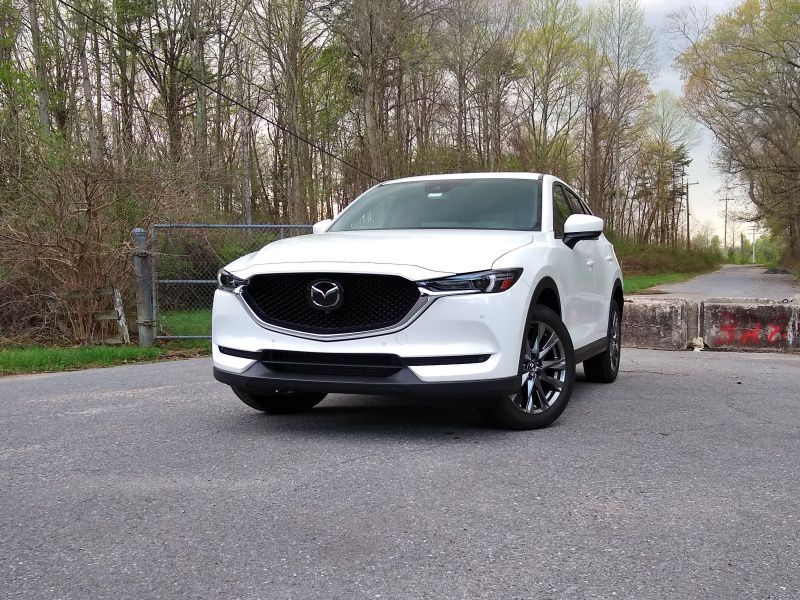
Photo by Brady Holt
Fuel Economy
The CR-V’s engine may not provide much driving excitement, but it delivers excellent fuel economy. With front-wheel drive, it gets an EPA-estimated 28 mpg city, 34 mpg highway, and 30 mpg combined, while the AWD CR-V scores 27 mpg city, 32 mpg highway, and 29 mpg combined. What’s more, you can choose a CR-V Hybrid that gets a whopping 40 mpg in the city, 35 mpg on the highway, and 38 mpg combined.
The CX-5’s fuel consumption isn’t bad for an SUV, but it trails the CR-V and other leading compact crossovers — especially if you get the big turbo. The base engine gets an EPA-estimated 25 mpg in the city, 31 mpg on the highway, and 28 mpg combined with front-wheel drive, and about 1 mpg less with all-wheel drive. That’s a couple miles per gallon less than the class leaders. The front-drive turbo gets 23 mpg city, 28 mpg highway, and 25 mpg combined, with AWD again costing about 1 mpg.
Honda CR-V
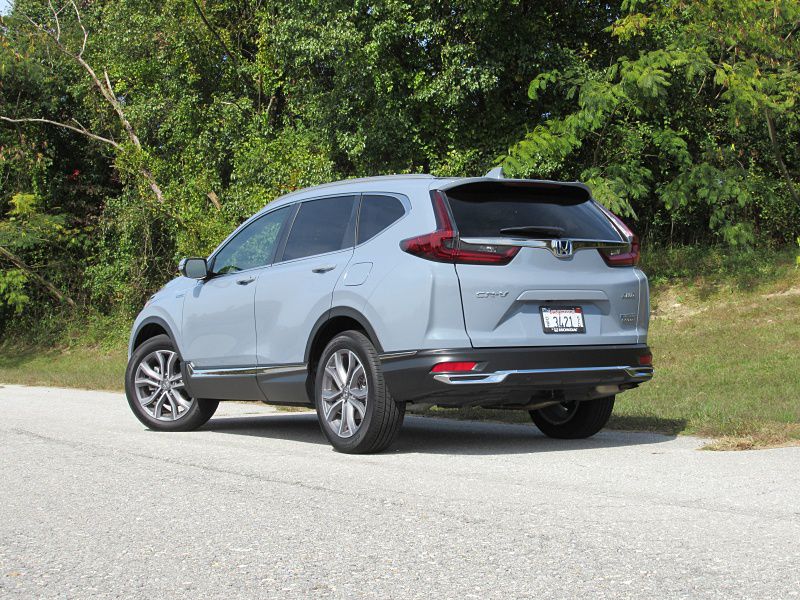
Photo by Brady Holt
Fuel Economy
Both the CR-V and CX-5 are impressively safe vehicles, with excellent crash-test scores and loads of standard safety technology. Forward automatic emergency braking, lane-keeping assistance, and adaptive cruise control are among the features included on both vehicles, even on their base models.
The CX-5 does just a bit better. Its standard features also include blind-spot monitoring, which costs extra on the CR-V. And its upper-trim models include a surround-view parking camera and rear automatic braking, which the CR-V doesn’t offer. The Mazda also scored slightly better for frontal-impact protection in National Highway Traffic Safety Administration testing (though both crossovers achieved a top five-star score), as well as better headlight ratings from the Insurance Institute for Highway Safety. The CR-V did perform slightly better at autonomously braking to avoid a pedestrian, but the CX-5 ekes out a win here.
Mazda CX-5
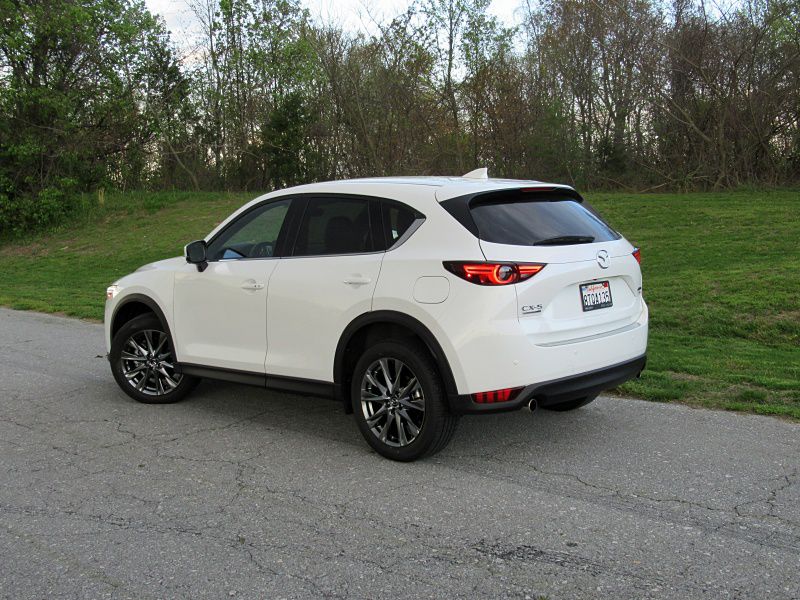
Photo by Brady Holt
Final Thoughts
The 2021 Honda CR-V is incredibly useful yet still fuel-efficient, and there are few areas in which it falls below average. As long as you don’t need the best possible infotainment system, the CR-V falls between satisfactory and exemplary in pretty much every way. Logically speaking, it checks all the boxes, and that makes it our winner.
It might be yours, too. True, the smaller, less economical 2021 Mazda CX-5 is the better choice for certain buyers. It feels like a luxury car in comparison with the ordinary CR-V — yet it has even more features at the same price. If this fun, polished crossover captures your heart, just make sure you won’t regret giving up the CR-V’s extra cargo capacity, rear legroom, and miles per gallon. And if the CX-5 doesn’t thrill you, the CR-V’s objective merits of utility and efficiency will make it agreeable to live with.
Honda CR-V
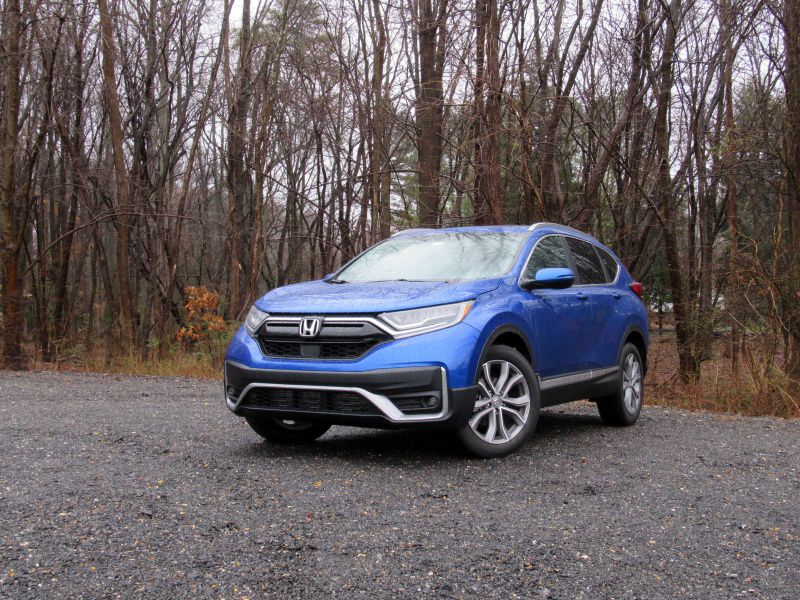
Photo by Brady Holt